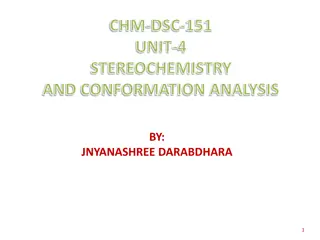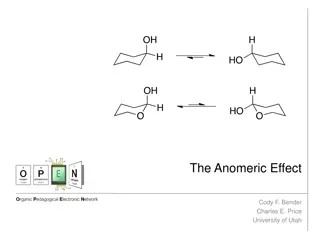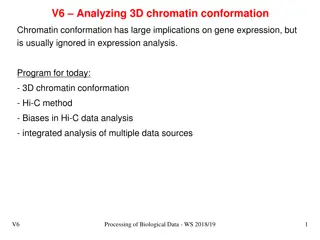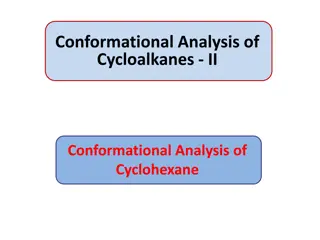Understanding Molecular Docking in Bioinformatics
Explore the world of molecular docking in bioinformatics through in silico approaches, learning about protein-ligand interactions, modes of docking, different docking approaches, and the theory of enzymes. Discover how this computational method helps predict the binding affinity and conformation of
4 views • 41 slides
Your Trusted Local Samoyed Breeder near me
At Heavenly Paws, we adhere to the highest standards of ethical breeding practices, prioritizing the health and well-being of our beloved Samoyeds above all else. Our breeding program focuses on genetic diversity, temperament, and conformation to breed standards, producing puppies that embody the tr
1 views • 5 slides
Understanding the Diels-Alder Reaction in Practical Organic Chemistry
The Diels-Alder reaction is a fundamental method in organic chemistry for producing cyclic organic compounds by combining a conjugated diene with an alkene. This reaction, named after Otto Diels and Kurt Alder, involves the formation of a six-membered ring with specific bond rearrangements. Conjugat
4 views • 15 slides
Factors Affecting Enzyme Activity and Catalysis
Enzyme activity is influenced by various factors such as enzyme concentration, temperature, pH, substrate concentration, inhibitors, activators, and physical agents. The rate of enzyme-catalyzed reactions is directly proportional to enzyme concentration, and temperature plays a significant role with
0 views • 23 slides
Stereochemistry and Conformation Analysis in Organic Molecules
This material discusses stereochemistry concepts such as saw-horse projections, Newman and Fischer representations, and conformational analysis of organic molecules. It covers different types of configurations and rotations around carbon-carbon bonds, emphasizing the importance of understanding spat
0 views • 16 slides
Understanding Protein Structural Motifs: The Beta Turn
In the realm of protein structure, the beta turn plays a crucial role in folding patterns. This simple motif involves a 180-degree turn in the backbone, linking adjacent beta strands. Typically consisting of 2 to 5 amino acids, with glycine often at position 3 and proline at position 2, the beta tur
0 views • 5 slides
Unraveling the Anomeric Effect: Origins and Mechanisms
The anomeric effect, discovered in 1955, reveals the preference of certain substituents in cyclohexyl systems to occupy the axial position. This phenomenon was first observed by J.T. Edward, N.-J. Chu, and R.U. Lemieux, challenging existing conceptions. The effect is attributed to hyperconjugation a
0 views • 10 slides
Insights into 3D Chromatin Conformation Analysis
Chromatin conformation analysis is crucial for understanding gene expression dynamics. Today's program covers topics such as 3D chromatin organization, Hi-C method, biases in Hi-C data analysis, and integrated analysis of data sources. Techniques like Chromosome Conformation Capture Technologies and
0 views • 34 slides
Understanding Cyclohexane Conformational Analysis
Conformational analysis of cyclohexane involves studying its chair form, axial and equatorial bonds, ring-flipping process, and stability comparison between chair and boat forms. The ring-flipping process interconverts axial and equatorial hydrogens, resulting in a more stable chair conformation. Vi
0 views • 21 slides








